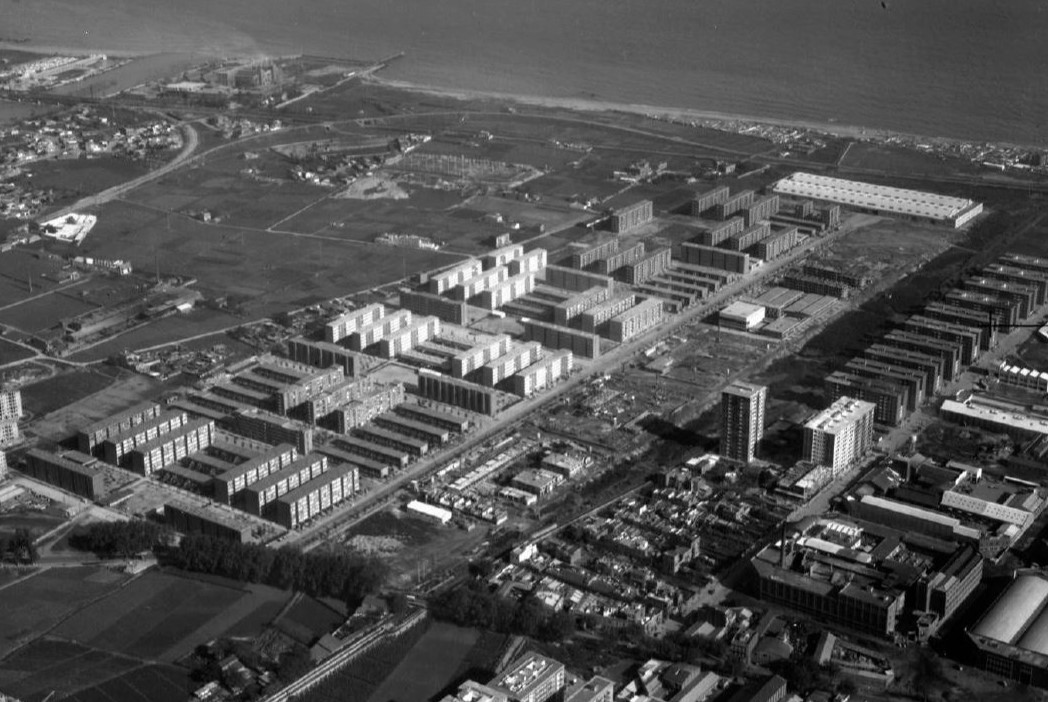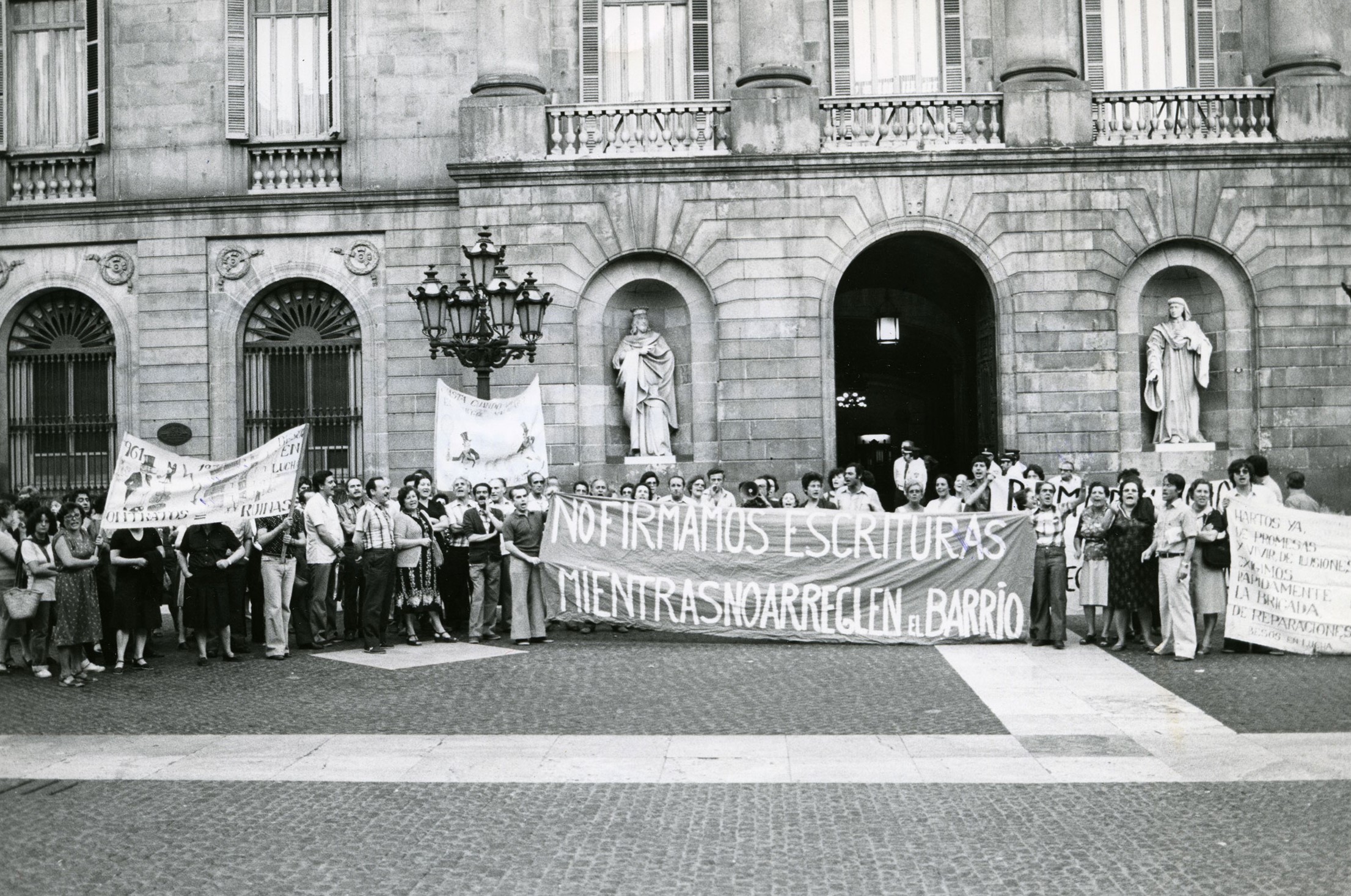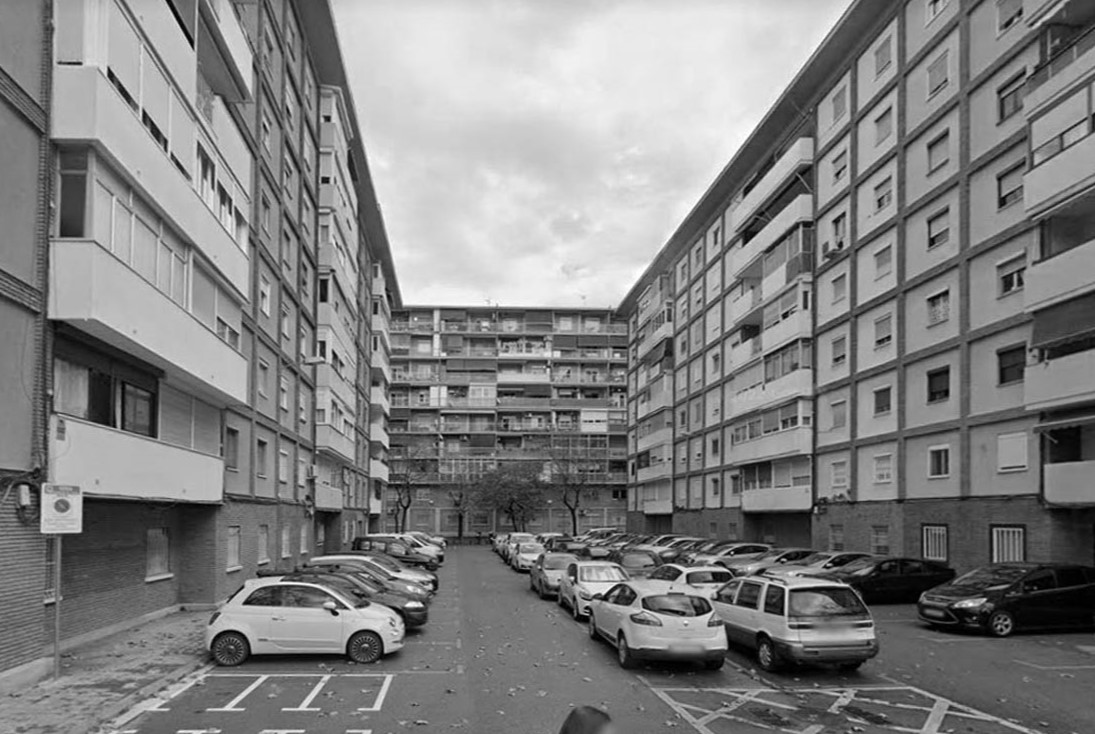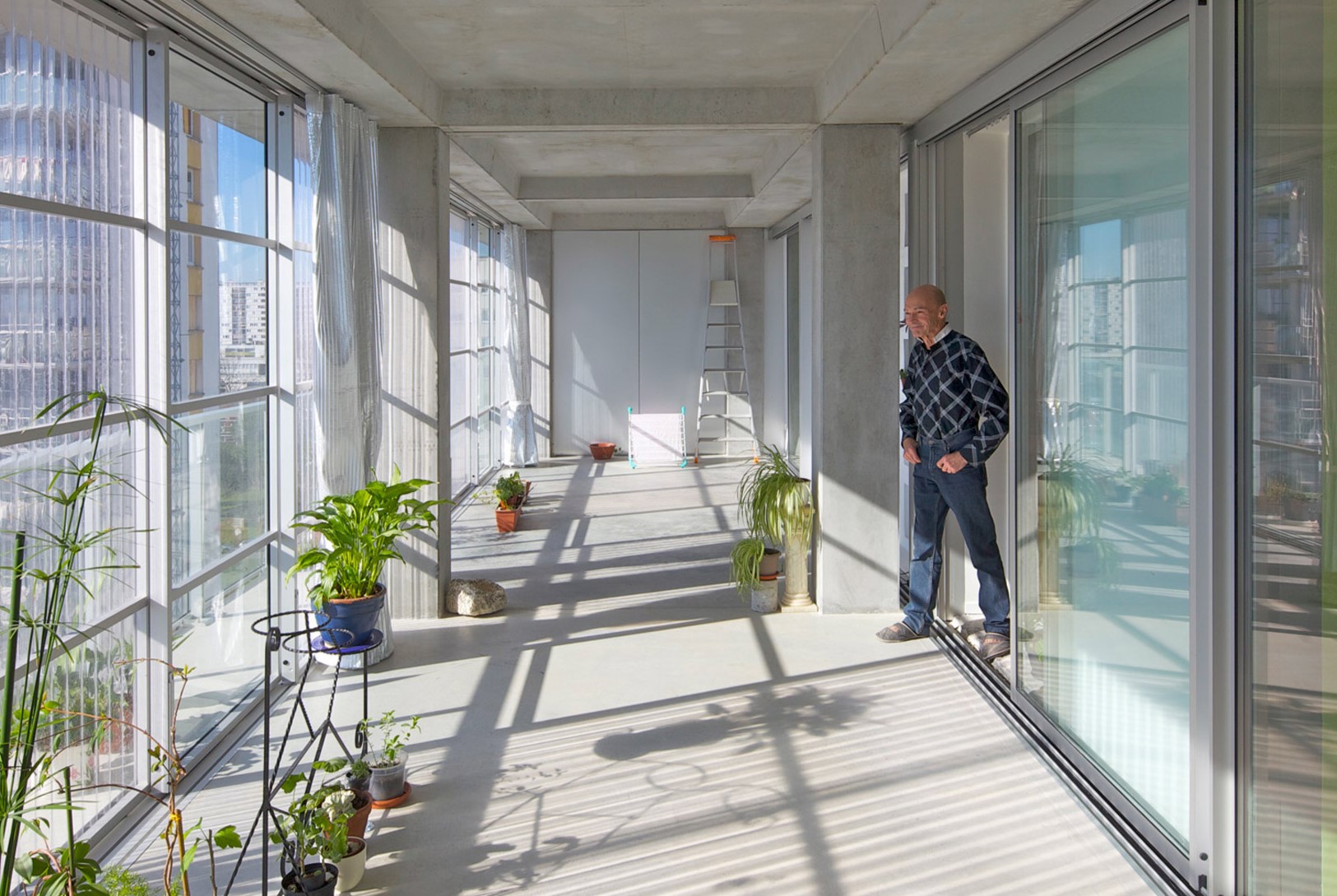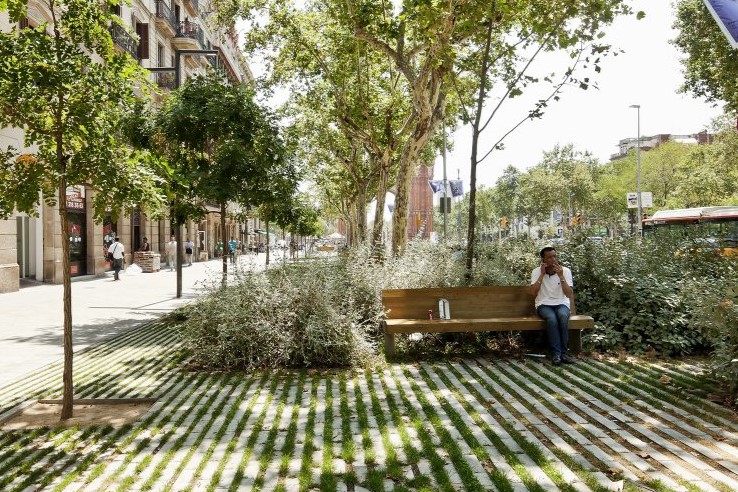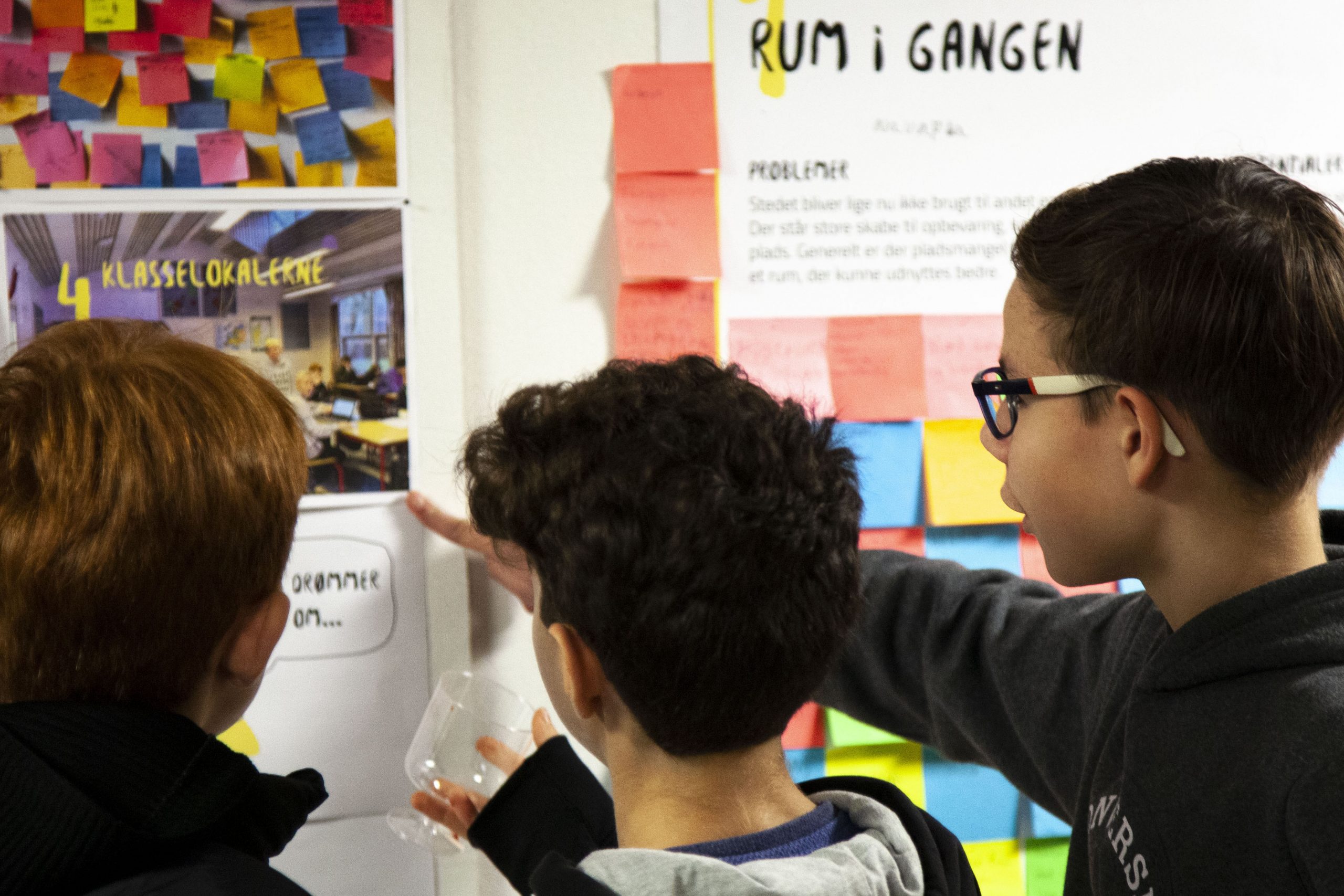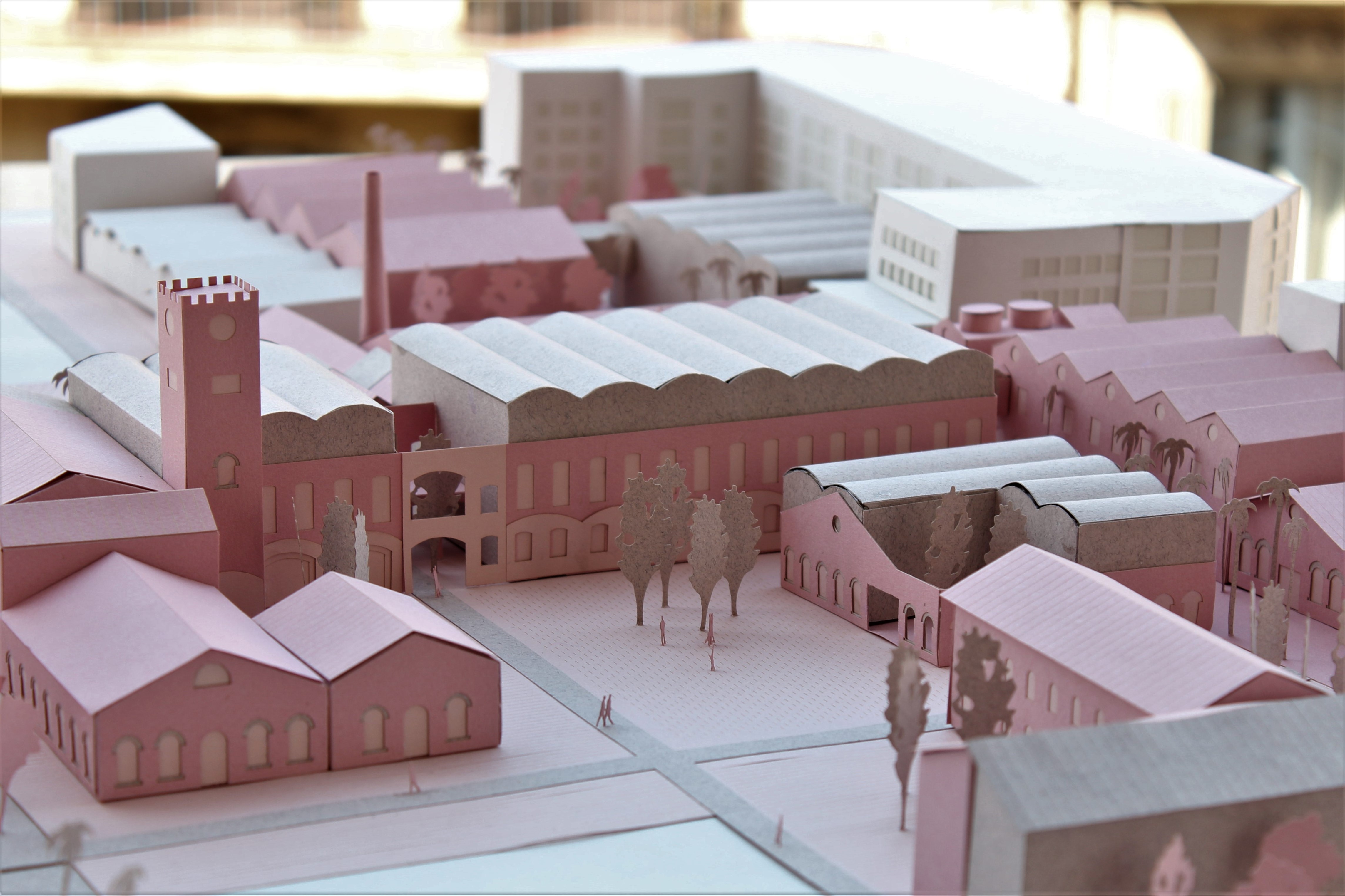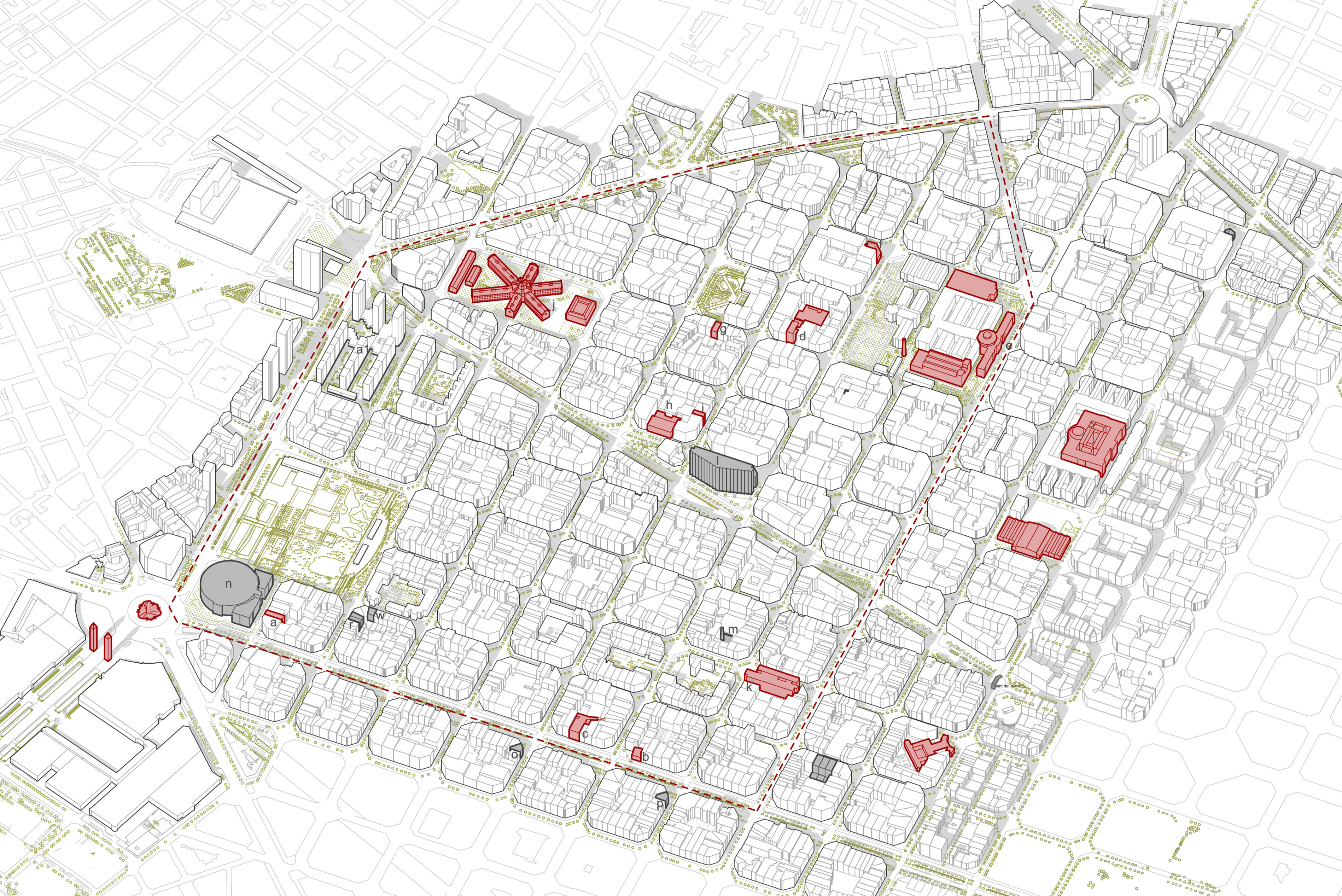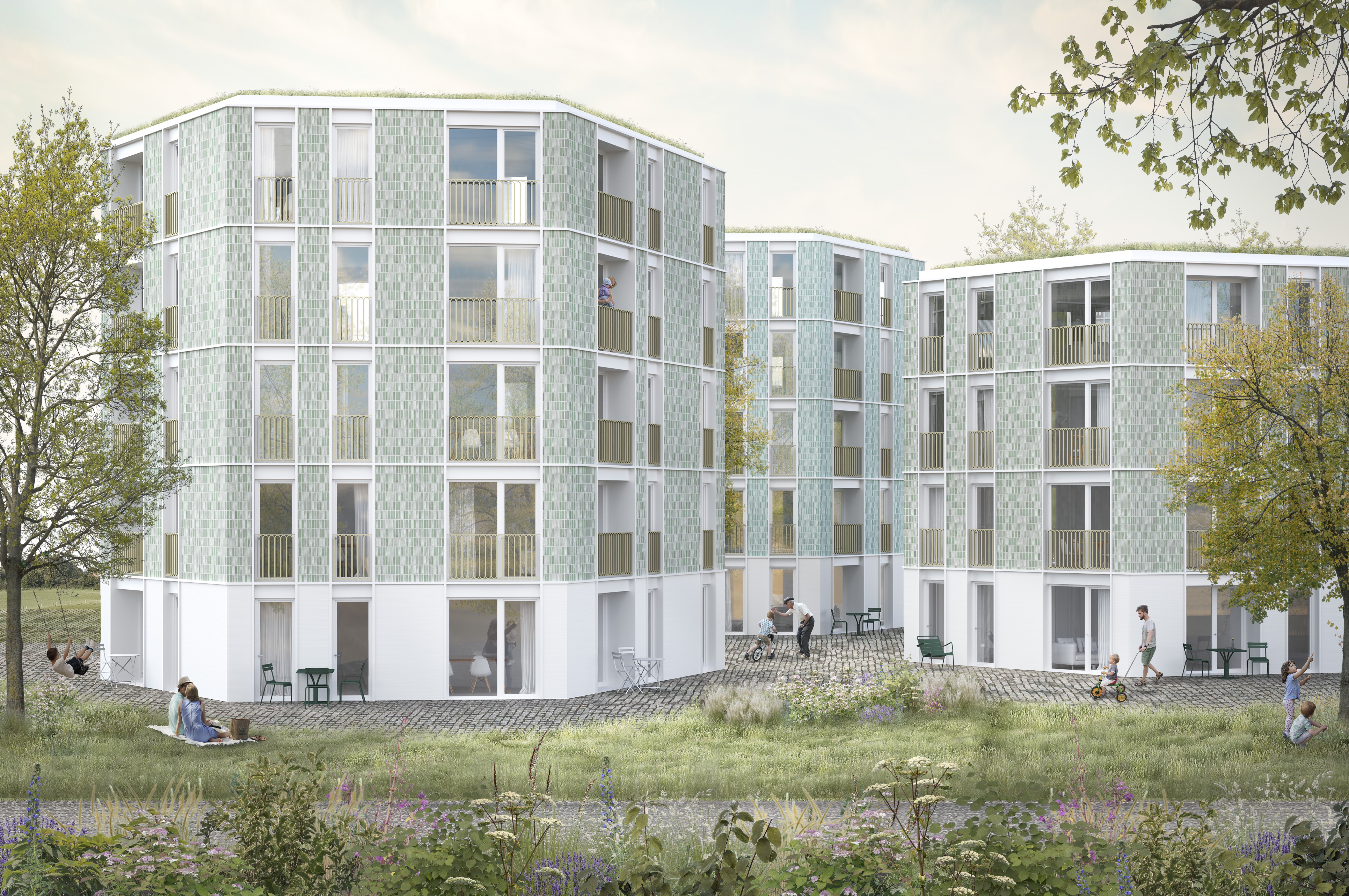Un viento que sigue soplando
Barcelone (ES) - Runner-up

TEAM DATA
Associate: Brenda Roqueta Vives (ES) – architect
brendaroquetavives@gmail.com / www.architectureonpaper.info
See the complete listing of portraits here
See the site here
TEAM PORTRAIT
VIDEO (by the team)
INTERVIEW
Click on the images to enlarge
1. How do you define the main issue of your project in relation with the theme “Living Cities Imagining architecture taking care of the milieus”? And in which way do you think your project can contribute to an ecological and/or social evolution?
The configuration of the neighborhood in the sixties represented a dialectical and social battle between the traditional city and the modern urbanism. It took decades to sew the two urban fabrics together. Thus, one of the main challenges of the project was the reconnection of the proximity scale of the current urban voids to the dense fabric at the larger scale. In this way, the project is part of an open process that seeks to create a more resilient neighborhood by addressing its vulnerabilities and introducing new inclusive and metabolic cycles in a holistic approach.
2. How did the issues of your design and the questions raised by the site mutation meet?
The project proposes actions that constitute a seed of change for the urban landscape regeneration through a multi-scalar and adaptative dialogue, encompassing 4 types of milieus: ecological, living, social and productive-economic. The empowerment and involvement of citizens in the planning decisions, will be crucial to foster a sustainable and thriving neighborhood that, through an open dialogue, embraces diversity and promotes sense of belonging for future generations.
PROJECT:
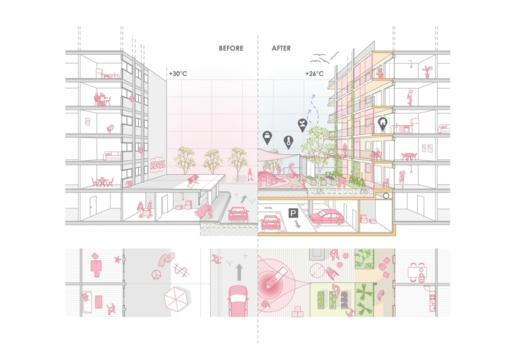
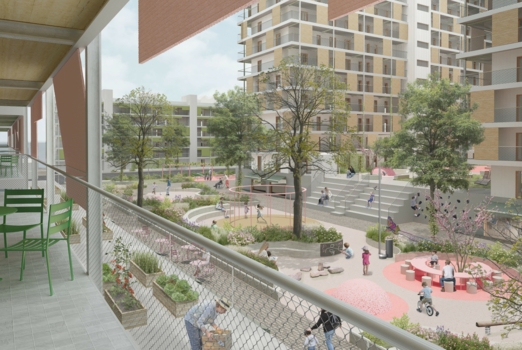
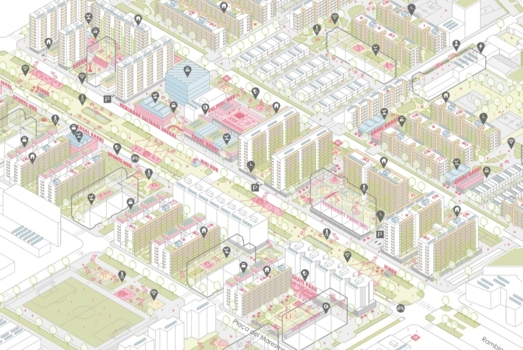
This is the first time addressing this issue on an individual level. However, most of the challenges have been present in other previous projects and competitions where I participated as part of a team throughout my professional background. Additionally, urban regeneration, rehabilitation and heritage were also very present topics in my final university project at ETSAV titled: “Prospectiva del (3er) paisatge postindustrial. Memòries productives a l’espai latent de Can Ricart”. Within this area, there are many reference projects that inspired the proposal, such as: -Architectural projects by Lacaton and Vassal for housing rehabilitation, energy efficiency and accessibility. -The book “Cities for people” by the architect and Danish urbanist Jan Gehl. -The remodeling proposal of Passeig Sant Joan in Barcelona by Lola Domènech, which served as a significant reference for urban regeneration. -The work of “Arki_lab”, an interdisciplinary team acting as an intermediate between citizens, architects, urban planners, public administration and other stakeholders, facilitating the connection and translation of knowledge from the process to the final physical design. This is achieved through workshops, co-creation, and engagement tools.
SITE:



Recognizing the importance of public participation, the strategies of the proposal include mechanisms for shared decision-making with citizens, empowering them as co-creators of the space and involving time and multidisciplinary actors from territorial governance (local government, municipal areas, territorial institutions) and also external governance (local associations, private sectors and citizens); inverting this way, the decision pyramid. In the proposal, time is considered as an important agent in implementing sustainable milieus. Therefore, the project is structured in different phases, to be implemented within a span of 10 years, and with a focus on starting with the most vulnerable areas on the northern part of the site, to create a safe and walkable neighborhood, fostering a sustainable interface.
REFERENCES:



After conducting recent landscape studies in collaboration with Sara Bartumeus and Anna Renau, commissioned by the “Ajuntament de Barcelona” I chose to address the challenges of the competition individually. The valuable insights gained from this collaborative journey served as a bedrock for crafting a proposal that ensures a cohesive and integrated solution for the regeneration of the urban, social and sustainable fabric of El Besòs i el Maresme neighborhood.
6. How could this prize help you in your professional career?
Indeed this is the first time participating in an Europan competition and therefore, the first time being honored with an Europan award. As a young architect, passionate about my hometown Barcelona, this represents a significant opportunity to engage in projects collaboratively with the public administrations and the citizens, fostering a positive impact in the revitalization of the city. Thus, I am confident that Europan will serve as a catalyst for advancing my professional career and instilling greater confidence in my capabilities.
TEAM IDENTITY
Legal status: architecture freelancer. No architectural office yet. However, our passion for the architectural representation motivated me to start Architectureonpaper Studio.
Team name: Architectureonpaper
Average age of the associates: 28 years old
Has your team, together or separately, already conceived or implemented some projects and/or won any competition? if so, which ones?
On an individual level, it is the first time receiving such an award. However, through collaboration with other studios we received as a team some other awards such as the first prize at the European Award for Architectural Heritage Intervention for the Study of the urban landscape of “la Nova Esquerra de l’Eixample” neighborhood in Barcelona. This achievement was a joint effort with Sara Bartumeus and Anna Renau.
WORKS:






